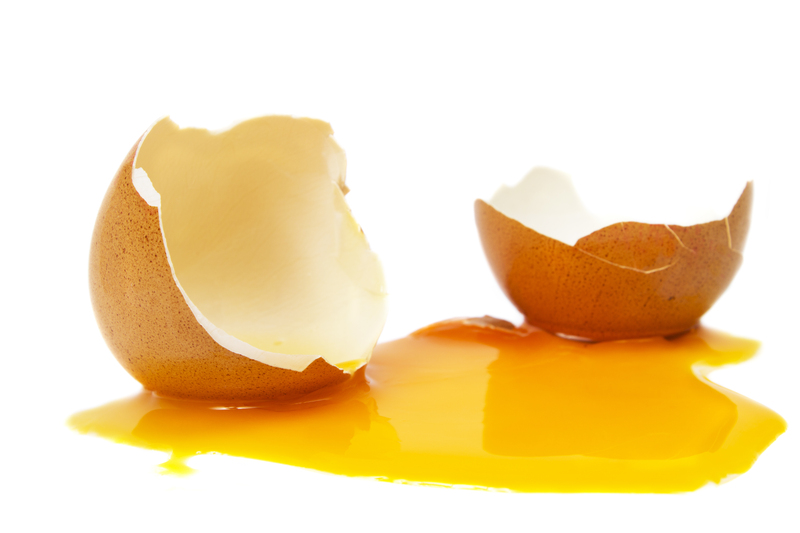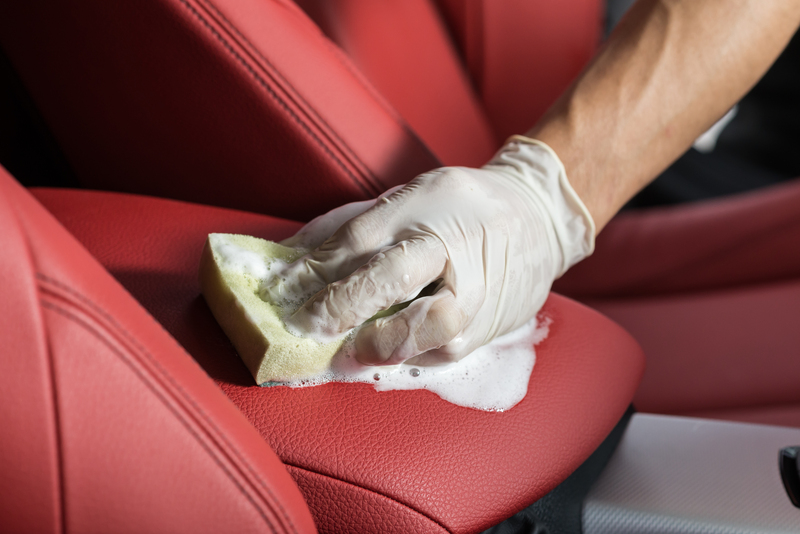Revive Your Velvet Curtains - Tips for Safe and Effective Cleaning
Posted on 03/06/2025
Revive Your Velvet Curtains - Tips for Safe and Effective Cleaning
Velvet curtains embody luxury, adding a plush and elegant touch to any room. Their rich texture and vibrant hues offer an instant upgrade to your decor. However, this sophistication requires special care--knowing how to clean and revive your velvet curtains is essential to preserving their allure. In this comprehensive guide, you'll learn everything you need to prolong the life of your velvet drapes with safe, effective, and simple cleaning tips.
Understanding Velvet: Why Special Care is Necessary
Before diving into cleaning methods, it's critical to understand what makes velvet unique. Velvet is not just a fabric; it's a weave that results in a soft, dense pile. Whether your curtains are made from silk velvet, cotton velvet, or synthetic velvet, all types share one trait: they're susceptible to crushing, watermarks, and irritation from improper cleaning methods.
- Delicate Pile: The raised fibers that give velvet its characteristic sheen are prone to matting and flattening.
- Color Sensitivity: Pigments in velvet can fade or bleed if exposed to harsh chemicals.
- Water Sensitivity: Direct contact with water can leave stains or streaks, especially on natural velvets.
Proper maintenance and gentle cleaning are essential for extending the beauty and lifespan of your elegant window dressings.

Routine Maintenance: The Key to Lasting Velvet Curtains
Avoid deep cleaning unless absolutely necessary. The best way to revive your velvet curtains is through consistent, gentle maintenance that prevents dust and dirt buildup.
1. Regular Dusting with a Vacuum or Brush
- Use the upholstery attachment on your vacuum, set to the lowest suction.
- Always move in the direction of the pile to keep fibers smooth.
- Alternatively, use a soft-bristled clothes brush to sweep dust from the curtain surface weekly.
2. Keeping Sunlight Exposure in Check
Prolonged exposure to direct sunlight can fade the vibrant colors of velvet fabric. Consider using sheer liners or repositioning curtain panels periodically to minimize sun damage.
3. Gently Shaking Out Your Curtains
- Once a month, carefully unhook your curtains and take them outdoors to shake out loose dust.
- Hold the panel by the header and give it a gentle shake, making sure to avoid aggressive force.
Spot Cleaning Velvet Curtains: Addressing Stains Promptly
Even with diligent care, spills or stains can occur. Spot cleaning is often the safest way to tackle small messes and revive your velvet drapes without overexposing them to moisture. Here's an effective spot-cleaning procedure for velvet:
Step-by-Step Velvet Spot Cleaning
- Act Fast: The quicker you address a spill, the less likely it will stain.
- Blot, Don't Rub: Use a clean white cloth or paper towel to gently blot up excess liquid. Press, don't wipe, to prevent pile damage.
- Test Cleaning Solution: Mix a few drops of mild dish soap in a cup of water. Test a tiny amount in an inconspicuous area to check for colorfastness before applying it to the stain.
- Clean the Stain: Dip a clean microfiber cloth in the diluted soapy water, wring it damp (not wet), and gently blot the stain. Keep the area as dry as possible.
- Rinse with Care: Using another clean, barely damp cloth, blot to remove any soap residue.
- Dry Immediately: Blot dry with a towel and use a hair dryer on the cool setting if needed. Always restore the pile by gently brushing or steaming the spot after it's dry.
Note: Never use harsh chemicals, vinegar, or bleach on velvet curtains--these can ruin the pile and fade the color.
Deep Cleaning Methods for Velvet Curtains
Periodic deep cleaning might be necessary for heavily soiled velvet drapes. Choosing the right technique is crucial, as incorrect methods can cause irreversible damage. Here are the safest options for deep cleaning velvet:
1. Professional Dry Cleaning
- This is the safest option for expensive or antique velvet curtains.
- Most velvet curtains have a "dry-clean only" label for a reason--professional cleaners use methods that protect the fabric while thoroughly cleaning it.
- If in doubt, always opt for a reputable dry cleaner with experience handling velvet.
2. Hand Washing Synthetic Velvet
Some modern synthetic velvets are labeled as safe for gentle hand washing. Always check the care label first. If approved, follow these steps for hand-washing:
- Fill a clean tub with cold or lukewarm water.
- Add a small amount of mild liquid detergent formulated for delicate fabrics.
- Submerge one panel at a time, swish gently--do not wring or scrub.
- Rinse thoroughly in cool water to remove all detergent.
- Press out excess water by rolling in a towel; do not twist or squeeze.
- Hang to dry away from direct sunlight or heat.
- Once dry, use a steamer or your hands to reshape and restore the pile.
3. Never Use a Washing Machine (Unless Label Approved)
- Most velvet curtains will not survive a trip through the wash cycle.
- If the label specifically allows machine washing, use the most delicate cycle, cold water, and place the panel in a mesh laundry bag.
- Skip the spin cycle as spinning can permanently crush velvet pile.
Restoring Velvet's Luster: Steaming and Brushing Techniques
If velvet curtains lose their plush texture after cleaning or over time, their appearance can be rejuvenated with simple restoration techniques:
Brushing the Pile
- Use a soft-bristled clothes brush or dedicated velvet brush.
- Gently sweep in the direction of the nap, not against it, to fluff the pile and restore its sheen.
Steaming for Smoothness
- Hold a handheld garment steamer a few inches from the fabric surface.
- Lightly steam in the direction of the pile--don't oversaturate.
- This lifts crushed fibers and eliminates wrinkles or watermarks.
Never iron velvet directly; the heat and pressure will crush the pile permanently.
Tips for Different Velvet Types
- Silk Velvet: Always dry clean--this variety is the most delicate and sensitive to water.
- Cotton Velvet: Can sometimes be hand washed if the care label allows, but dry cleaning is generally preferred.
- Polyester or Microfiber Velvet: Typically more robust, sometimes safe for gentle hand-washing or cool machine cycles, but always confirm first.
Preventing Future Damage to Velvet Curtains
Protecting your velvet curtains from premature wear and staining will significantly cut down on the need for deep or intensive cleaning. Here are some simple prevention strategies:
- Use curtain tiebacks: Prevent excess handling and wear, especially near high-traffic areas.
- Install liners: A liner shields the velvet from sunlight, dust, and pollutants.
- Keep windows clean: Dust and moisture from dirty windows can transfer to curtain fibers.
- Avoid smoking indoors: Tar and smoke not only discolor but also cause odors that are hard to remove from velvet.
- Keep pets away: Pet hair and claws can quickly damage the delicate surface.

Frequently Asked Questions About Cleaning Velvet Curtains
Can I use a fabric freshener spray on velvet curtains?
It's best to avoid aerosol sprays--some can leave stains or residue. Instead, maintain freshness with regular vacuuming and shaking out. For odors, try lightly airing out panels outdoors or in a well-ventilated room.
How often should I clean velvet curtains?
- Weekly: Dust or vacuum to remove buildup.
- Spot Clean: As needed, after spills or marks.
- Deep Clean: Every 1-2 years, or as the fabric requires, depending on exposure and local air quality.
What should I do if my velvet curtain develops hard water stains?
Gently dab stains with a damp (not wet) microfiber cloth. If the marks persist, professional cleaning is your safest bet.
Can crushed velvet pile be restored?
In many cases, yes! Try steaming the affected section and gently brushing in the pile's direction. If damage is extensive, consult a professional cleaner.
Summary: Keep Your Velvet Curtains Looking Like New
Velvet curtain maintenance doesn't have to be intimidating. By following these safe, effective cleaning practices, your window dressings will retain their elegance, texture, and color for years to come. Remember to:
- Vacuum and dust regularly to prevent deep-seated dirt.
- Spot clean stains quickly and gently, blotting instead of rubbing.
- Deep clean only when necessary and according to your curtain's care label--in most cases, dry cleaning is best.
- Restore pile and smooth out wrinkles with careful steaming and brushing.
- Protect velvet from direct sun and heavy use with careful placement and added liners.
With the right knowledge and attention, you can revive your velvet curtains and enjoy their unmatched style and softness in your home for many seasons to come. For valuable decor like velvet, a little extra care goes a long way!






